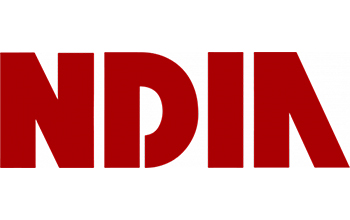Optimize EVM Compliance and Surveillance While Improving Project Execution

Internal compliance and surveillance are essential components of a successful Earned Value Management (EVM) approach to project delivery. Contrary to common misconceptions, compliance and surveillance don’t need to be expensive, burdensome, or painful — and they should not be viewed as a pointless box-checking exercise.
In fact, by managing compliance and surveillance the right way, project teams can reduce risks, navigate audits more efficiently, and — most importantly — help deliver their projects on schedule and on cost.
In this article, we dispel two common misconceptions that interfere with the success of internal EVM compliance and surveillance activities. We also share three core strategies for project teams and EV focal points (“EV Focals”) to optimize internal compliance and surveillance in a way that supports successful and efficient project outcomes (while avoiding the risks and costs of reviews and audits).
Before jumping in, let’s get some definitions clear:
What is EVM Compliance?
➤ Obtaining — or maintaining — an accepted, or certified, EVMS that meets the 32 EIA-748 Guidelines.
What is EVM Surveillance?
➤ Routine or periodic review or validation of an already-compliant EVMS.
2 Misconceptions About EVM Compliance and Surveillance
There are two misconceptions that lead to ineffective and inefficient compliance and surveillance. The first is that EVM is about “gaming the system” or “finding shortcuts to check off compliance boxes.” In truth, effective and productive internal compliance is about implementing an intelligent, streamlined, and useful approach that brings real performance and efficiency benefits.
The second misconception is that compliance and surveillance should focus disproportionately on the compliance process. Although EVM teams must adhere to the correct EVM process, it’s vital to remember the reason for it: to boost performance and ensure the on-schedule, on-cost, and on-scope delivery of the project.
By dispelling these misconceptions, teams clear the path to do compliance and surveillance right.
How to Do Internal EVM Compliance and Surveillance Right
Here are three key ways for internal compliance and surveillance teams to improve effectiveness, cost-efficiency, and performance:
1. Remember that organizational buy-in and culture matter A LOT.
The first step to success requires EV Focals and other EVM professionals to sell the value of compliance and surveillance to their teams. Without the organizational buy-in of the compliance and surveillance process, there could be too many naysayers who don’t participate in the process beyond seeing it as a box-checking exercise.
Achieving organizational approval requires a focus on culture. Teams should see the EV focal as a superhero who can help them identify and resolve potential problems early. EV Focals should also strive to be as authentic and transparent as possible. This will help win the support of team members and get them vested in meaningful, performance-boosting compliance and surveillance.
2. Engage everyone in the process of finding and fixing problems.
Internal compliance and surveillance shouldn’t be a process where EV Focals and their teams simply tell everyone where they’re not measuring up. By getting everyone on the same page, all team members will be engaged in the process. Ideally, individual working groups should be encouraged to report potential issues to the EV Focal to avoid any surprises. Together, they can work on concerns, issues, and risks while identifying opportunities for process improvements. This communication and cooperation are especially important leading up to a major review.
When finding and fixing compliance and surveillance problems as a team, the 80/20 rule reigns supreme. For optimal efficiency, internal compliance and review teams should spend time wisely with busy project teams by focusing on performance metrics that also impact compliance. This is the essence of AzTech’s focus on performance-driven compliance.
Learn more about performance-driven compliance here.
3. Use the “show me” mindset to be as transparent as possible.
Great reviewers or auditors live by the “trust but verify” creed. Their “show me” mindset highlights the importance of tangible evidence and practical results over mere promises, assertions, or documented processes.
In a corporate or Earned Value Management (EVM) context, the ethos drives organizations to reveal project progress, forecasts, variance analysis of root causes, impacts, and corrective actions for cost and schedule variances. By consistently demanding solid proof of performance, this mentality encourages decision-making based on data and reduces compliance risks, ensuring that organizations successfully reach their goals.
Internal compliance and surveillance teams who practice organizational transparency openly discuss challenges with government or customer teams so there are never any surprises. Being proactive like this requires internal teams to document their findings with accurate data traces and artifacts that openly reveal process, training, or data issues and compliance risks.
Why do transparency and authenticity work? Government surveillance and compliance review teams are essentially auditors whose job is to conduct due diligence. When internal contractors self-report concerns, it helps government review teams improve their work and know they aren’t missing anything. It also helps government teams gain confidence in the EVMS and the contractor’s ability to open and complete corrective actions when the review is over.
Conclusion
We all know that government or customer reviews and compliance activities are costly. This is why it’s so important to apply the above tips for doing internal compliance and surveillance right. These strategies improve the quality of EVMS data and help EVM teams create reports that tell a consistent story. Ultimately, this will solidify the trust and confidence of review teams in the EVMS, greatly reducing the need for reviews. It will also streamline the time spent preparing for and conducting reviews when and if they occur. Most importantly, AzTech’s performance-driven compliance focuses on improving cost and schedule performance as the priority with compliance a necessary part of effective oversight.
What strategies help your EVM team achieve more efficient and successful internal compliance and surveillance? Please contact us and share your story!
Subscribe to our Newsletter:







